Another month another premium Half-Frame. Reto are back with a updated version of arguably the most talked about film camera of 2022. But does the Ektar H35N live up to the hype of it Predecessor ? Nope – it smashes it . Arguably the best Plastic fantastic both half or full frame in years. So I decided to take it to Helsinki.
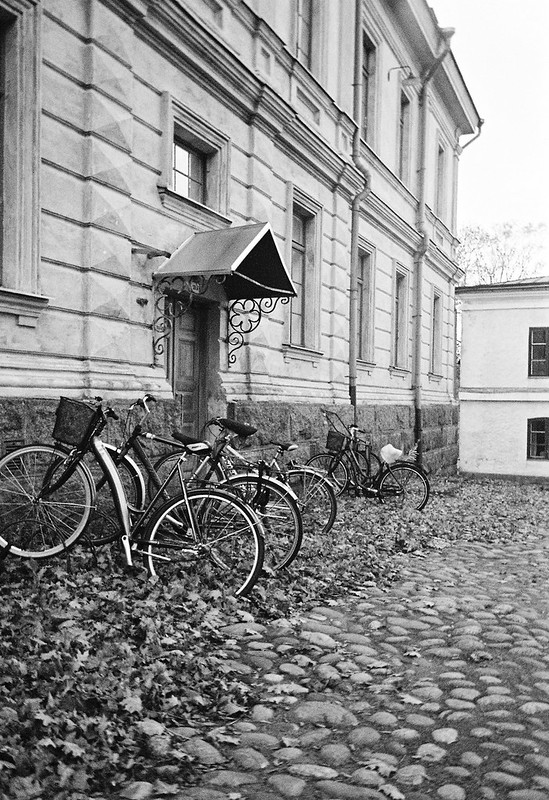
Hang on you said Reto ? Isn’t this a Kodak ?
Nope.
So like all Kodak cameras made today, Reto just licences the name. Now I suspect there’s a bit of Q.C from Kodak but that’s it. And both this and the original Kodak Ektar H35 oozes Kodak styling.
Reto are a HK based company that first came to prominence with their Reto3D a modern hommage to the Nimslo et al. They have hardly put a foot wrong with gaining much credit with the film community. That’s by bring back the VUWS with the Reto UWS and the original H35 that the H35N succeeds.
Never Heard of the original ?
Blimey !!!
Good to hear you were finally released in that prisoner exchange. Because you must have been in solitary to have missed it. Arguably the most talked about new film camera of 2022 by some margin. And it gathered huge praise. Even winning a few awards en route (got my 2022 style award)
I have a full review but the TL:DR version is as follows
It’s a Half frame camera styled to look like Kodak instamatic. But with the same legendary 22mm plastic lens as the Reto’s VUWS clone. Everything from focus to exposure is fixed in this Lo-fi retro machine. There is a built in flash.
The N word ?
The N suffix, I suspect designates this as the New version. And they’re not the first to use this. Notably Canon used it with tweaked mark II models in their EOS camera ranges like my EOS-1N. Pentax also used it some later bodies like the P30n or MX-5n to designated updated version
So what’s new ?

-The New Look
So Reto have sensibly evolved the camera. The new model looks similar with the same overall retro style but a different colour panel approach. The old model had part faux leather styling. But here you get a choice of 3 stripped modes or 3 metallic colour faceplate versions. I prefer the older faux leather style ones and even the Black on i got tends to show fingermarks but this is a personal taste issue.
The look of both is inspired by Kodak’s Instamatic 126 film cameras and is very well done.
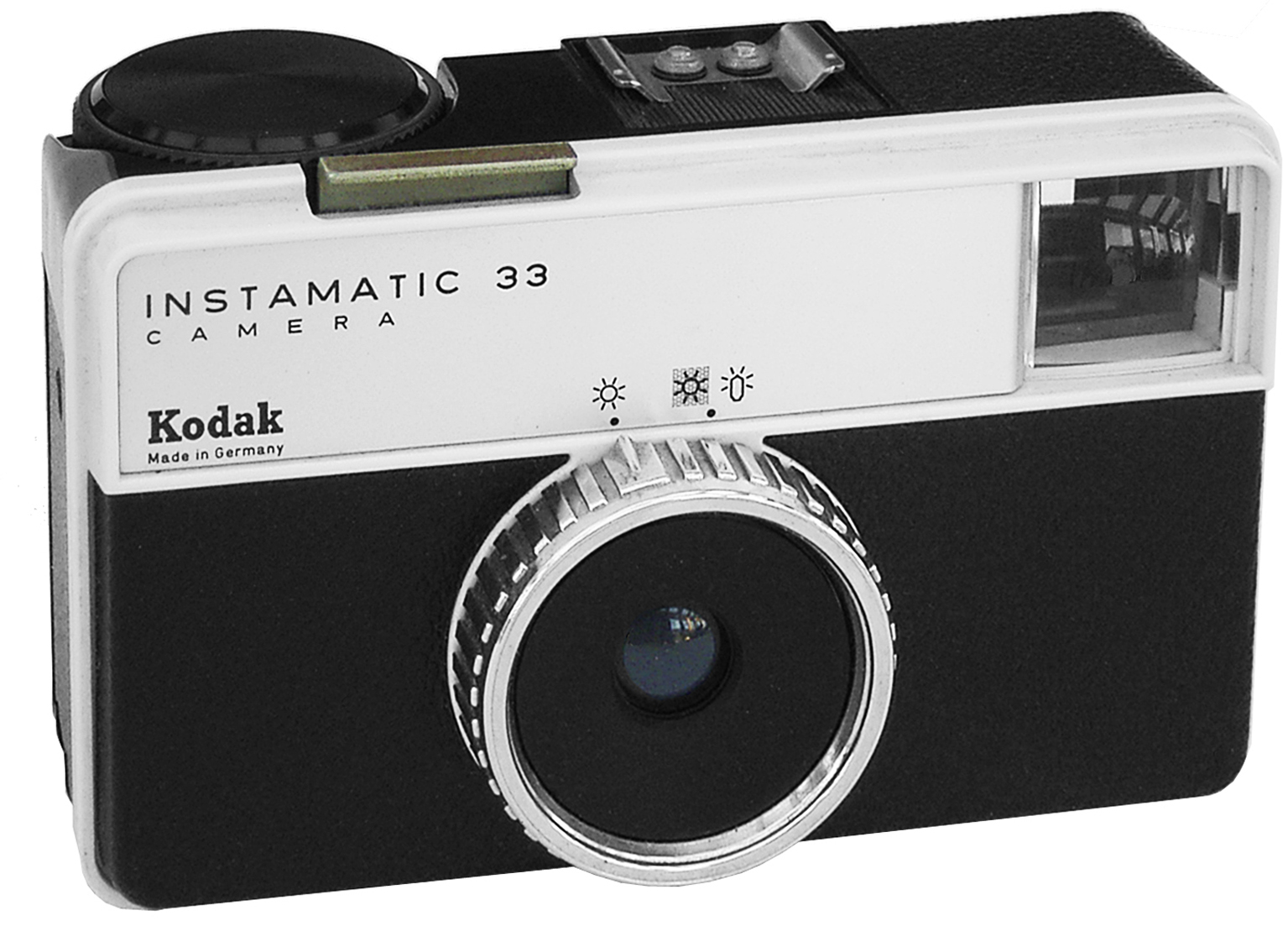
-Spec wise things are also improved
- Upgraded lens still 22mm but one element coated glass the other plastic
- Tripod and cable point. Using the latter allows you to use bulb shutter
- 2 aperture settings
- Easier loading
- Built in optional star filter
- Improved finder and rewind
The shutter is fixed at 1/100 unless using cable release. Sadly Cable only accesses the B mode (and conversely you can’t use the normal shutter button for bulb). The Star filter is interesting but I kinda wish we could have got a ND filter or something instead. Reto could have made the lens bezel fit a filter ring (bit wider than 30mm). I guess a 30mm stepping ring and some blu tack might work.
—Update 03/11/23 – It takes Filters !!!—
At the time of writing this originally. I had tried a few filter threads. Ithe 30mm was just a bit loose and a 32mm too big. I picked a up a Kood 30.5-49mm stepping ring and the 30.5mm screws in nicely !!! Whilst not common 30.5mm filters are reasonably available or you could use a stepping ring but it may block the finder.
—-
Focus remains fixed with Reto implying good from 1m to infinity. Both use and running the lens set up through Omni calculator’s Dof Calculator would suggest that actually pretty realistic. As before the film plane is curved to improve focus.

-Drop the Battery to get a stop
The lens initially appears to be a bit wider with the listed aperture at f/8. However Reto confirmed it actually has 2 stops. In normal use it has a Waterhouse stop aperture of f/11. That slides out of the way when you turn on the flash like the Agfaphoto.
But just like the Agfaphoto if you remove the single AAA battery (not provided) you gain an extra stop at the expense of image quality. This however adds a bit of flex to this camera.

Analogue cafe helpfully the Flash GN is 11 with Reto and have a helpful flash guide. GN11 is a bit weedy and with 100ISO, the optimal point is 1.37m (with a ±1EV range of ~1-2m). 400 ISO will have a ±1EV range of ~2-4m.
They also suggest the star filter may also add a ¼ stop although I can’t find that quoted anywhere else and star filters are usually deemed to not impact exposure (then again ¼ stop is hardly worth bothering over).
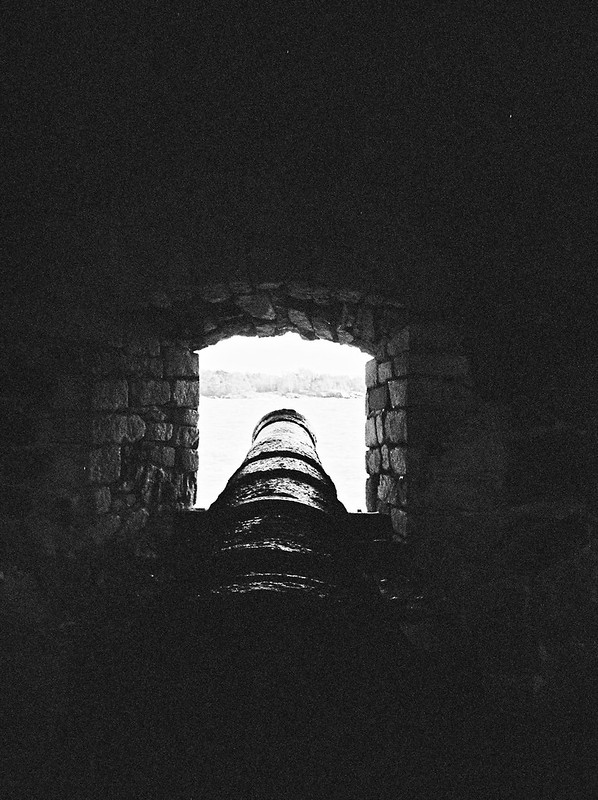
What’s in the box
The on fleek box perfectly captures the style and the linked heritage of this kodak branded camera. Inside you’ll find a QR codes card linking to quick start manual and a video tutorials. The soft bag is bag is back. There is a strap which is a more simpler
How does it stack up against Rivals
In essence we have 3 cameras in this class the H35, H35N and some half-frames developed off the Dubblefilm Show full frame class. Of the latter I’ve seen a few Notably the Agfaphoto Half-Frame and the Escura Snaps Half.
| Kodak Ektar H35N | Kodak Ektar H35 | AgfaPhoto Half-Frame | |
|---|---|---|---|
| LENS | 22mm 1:8 | 22mm 1:9.5 | 31mm 1:9* |
| Lens Construction | 2 element 1Coated Glass & 1 Plastic | 2 Elements Both Plastic | 1 element Plastic |
| Changeable aperture | Yes 2 stops (Flash mode) | No | Yes 2 stops (Flash mode) |
| Shutter | 1/100 + Bulb | 1/100 | ~1/120 |
| Metering | None | None | None |
| Focusing | Fixed | Fixed | Fixed |
| Focus Range | 1m-∞ | 1m-∞ | 1m-∞ |
| Flash | Manual 1xAAA | Manual 1XAAA | Manual 1XAAA |
| Mounts | Tripod Cable | None | None |
| Filter | Stars + 30.5mm | Not Default | Not Default |
| COST1 | £55 | £50 | £35 |
1 – Ektar model pricing from Analogue Wonderland & Agfaphoto is Urban Outfitters UK at time of publication. I get no commission from these links
I struggled to get a cost comparison as I could find a fair few companies selling both Ektar models all with roughly a Five £/$/€ difference. No one I sought sold all 3.
Although both the original and the Agfaphoto lack either built in filters or filter rings it is possible to shimmy a step up ring on.
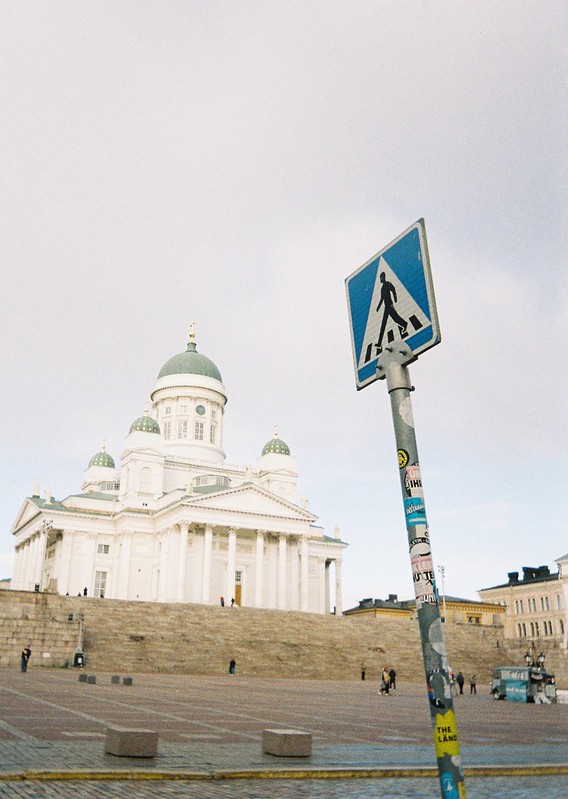
In Use
This is a relatively easy camera to use . Just pick your film (see below), load and shoot.
The camera has an easier load mechanism. You don’t need to pop out the rewind column, just slid into place and pull out the leader and stick into uptake slot. Rewinding has conventional load. The shutter is cocked on winding so no risk of a double exposure.
Flash is turned on by turning the lens bezel and the star filter slides up.
Film Choice
Most modern colour film has a degree of latitude, so you have some flex. With most consumer grade films you can expect a degree of give on exposure (i usually use +/- 2EV) but milage does vary and forget this with slide and expired film.
One thing you can do with this is drop the aperture down to f/8 by using the flash setting. This gives you an extra shot at the expense of some sharpness.
As said milage may vary. Most B&W will be the same but some have quite narrow or wide latitude and slide film will not suffer much off target range.
So picking film can be key with these .
-400 ISO v Slower
The manual recommends 400 ISO colour film unless really bright. And this will cover most reasonable daylight scenes if you use fresh consumer but as above shows will get overblown even with a good latitude film like XP2 if very sunny. And I managed to hit above 15EV in Helsinki just to prove how much of an issue that could be as the comparison below shows (update you can now easily add a ND filter)


Just in case you’re wondering if that was a processing issue the other half of the frame came out fine.
Conversely 200 ISO or 100 ISO will be great on Sunny days. The 200 ISO can tolerate a quite a bit of cloud so you don’t need to panic and you can drop a stop too.
I’ve tabulated the optimal exposure for each film ISO alongside a safe range (fresh Colour negative only) and the classic 2 plus & and minus.
The H35N Exposure table
| Aperture | Ideal EV | Safe Range -1 to +2EV | Okay Range -2 to +2EV | |
|---|---|---|---|---|
| 100 ISO | f/11 | 14 Slightly Overcast | 13-16 Overcast to Sunny on beach | 12-17 Heavily Overcast to Very Sunny Snow/Beach |
| f/8 (Flash) | 13 Overcast | 12-15 Heavily Overcast to Sunny | 11-16 Foggy day to Sunny Snow/Beach | |
| 200 ISO | f/11 | 13 Overcast | 12-15 Heavily Overcast to Sunny | 11-16 Foggy day to Sunny Snow/Beach |
| f/8 | 12 Heavily Overcast /shade in full sun | 11-14 Foggy Day to slightly Overcast | 10-14 Just after sunset to Slightly Overcast | |
| 400 ISO | f/11 | 12 Heavily Overcast/shade in full sun | 11-14 Foggy Day to slightly Overcast | 10-14 Just after sunset to Slightly Overcast |
| f/8 | 11 Foggy Day | 10-13 Just after Sunset to Overcast | 9-13 Sporting event under bright light to Overcast | |
| 800 ISO | f/11 | 11 Foggy Day | 10-13 Just after Sunset to Overcast | 9-13 Sporting event under bright light to Overcast |
| f/8 | 10 Just after Sunset | 9-12 Sporting event under bright light to Heavy Overcast | 8-12 Bright window display to Heavy overcast |
If you wanna go faster or slower I think you can work it out…
Shooting Notes
Sadly the Film was irradiated by the TSA staff at Edinburgh airport, luckily they use the older x-ray scanners. The lovely TSA folk at Helsinki hand checked my film and even took time to check none in the cameras (just as well as they use the more deadly to film CT scanners. I got pulled on the way back in transit for a random check at Schipol in Amsterdam. They had no issues about a hand check (just as well as the CT scanner was in use).
The conditions in Helsinki were good from Sunny 16+ to Overcast when shooting. Processing was by the nice folk at Photo Hippo. They are the same lab I used for the Alfie Tych, Agfaphoto Half-frame and the some of the original H35 images if you wanna compare.
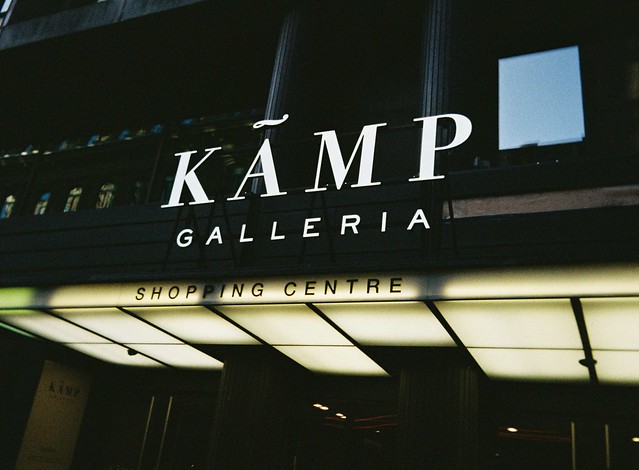
Results
Exposure is gonna be a result of your film choices and conditions. Even though you can drop a stop but as we’ll see you can loose optically.
The original model had Reto’s version of the legendary VUWS lens. This made that camera the top dog in the burgeoning plastic-fanastic half frame market. This pushes that a wee bit further and arguable gives full frame cameras in the Dubblefilm show class a run for their money.
-The Optic qualities
So as expected, the camera uses only the central portion of the field of the lens. This means you only really get significant fall off along the thin edges (top and bottom of of portrait frames). As you will naturally use this in portrait mode you notice that less. This landscape oriented shot illustrates the imperfections better

So you’ll need to click to see the bigger version. But whilst the centre of the image is pretty clear with the tramlines & pavement stones well delineated at the bottom to into the medium distance. Likewise the woman about 40-50m away and the black van. But the building on the left and the car coming into the frame on the right are much softer.
Oddly if the object at the edges is close then the impact is much less. This makes it a great camera from working near ground in portrait mode as below
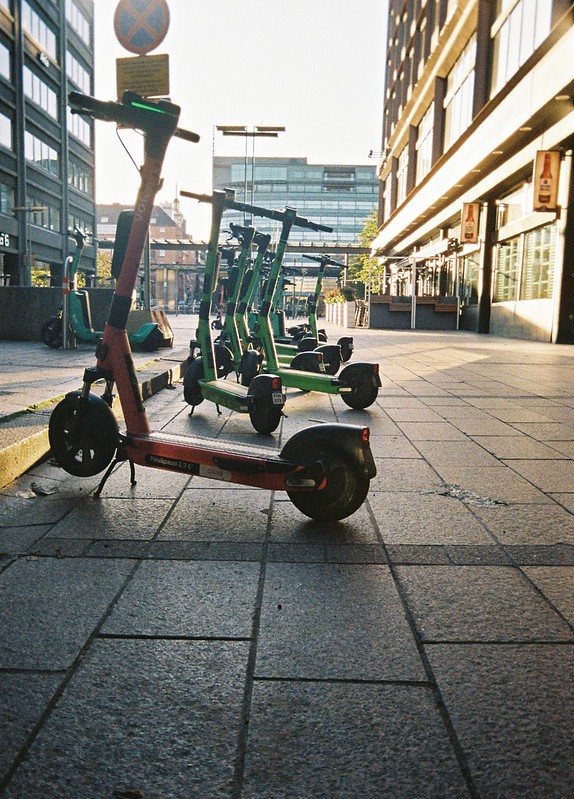
For the most part the sharpness of the central image whilst not crisp is pretty good for a half frame. And yes it can’t hold up to my Olympus PEN EE-2. But that’s a multi element Zuiko lens. made by Olympus in their Heyday. This is not that awful in comparison. It does fall off on very distant object making it not the best choice for landscape work but…
Chromatic aberrations are evident but not intrusive and are more noticeable on the colour shots adding some character.
-The flash setting shots
So dropping the aperture does give you flex. But that’s at the price of a drop image quality. Compare these 2 shots from the same position.


But that said you can get away with a lot using this in low light.

Flash is a bit weedy but can be handy
-Compared to the VUWS ?
It’s telling the original H35 was good but you could always see half framing the VUWS lens made it weaker. But here I struggle to see much difference versus a VUWS clone image. Although the latter will enlarge better.
Final thoughts on the Kodak Ektar H35N
So bear in mind, I came to use this just after the Alfie Tych. I’m still excited by the Tych – it is so novel and British. But bang for buck I was left a little bit disappointed. Not so here. Reto pull a Rabbit out of the hat again and for just a fiver more make better camera than the original.
Now there are flaws.
Cable only gives you bulb, flash is weedy and the filter choice was meh for me. Also I think the finish is better on the old model. Meanwhile the lens, whilst good for the class is kicked firmly out of the park by legendary glass lensed vintage Japanese half frames. But on balance this isn’t try to compete in that market. And the the others are minor issues.
This is one of the best new cameras I’ve seen in recent years and is very much the leader of the plastic Fantastic pack giving even the ole VUWS a run for it’s money. For those with an existing H35 the difference is important but incremental. Bit having to chose between last and current iPhone models. At Just 5 £$€ more it make sense for folks without to buy this over the H35. You can also add filters easily
For me, this hybrid VUWS lens is fascinating.
And boy does it raises some interesting questions. So will we get a mark III (H35X) with all glass ? Or will we see this lens full frame as a Reto UWS+ or a Ektar full frame ?
Alternatives
It seems another month another modern half frames these days. So the Alfie Tych is more up market with metering and an impressive spec. But is arguably let down by the standard model’s main lens and is 5-6x the cost. Meanwhile the H35N already illustrates you can put a much better part glass lens in for relatively low cost. It cost 5- 6 times the cost of of course he H35N. For that money the Lomography LCA-WIDE offers a switchable between half and full frame, decent lens as well as lots of spec.
But both the H35 and H35N do have rivals in the form of models converted from the Dubblefilm Show. Here in Europe the most obvious is Agfaphoto Half Frame. There is also the Escura Snaps Half. Whilst they have their own retro charm, they aren’t quite as stylish and good clinically. The Agfaphoto is however a good 20 quid plus cheaper.
So Lomography do sell the Diana Mini which shoots both square 24x24mm and “half frame” 17x24mm. Giving Really quirky images with same range of controls as the H35N offer but it is a bit more harder to use and your lab may hate you.
Of course
Other sources
So Reto have the retopro site for their Kodak branded models (separate from the Reto branded site). Analogue cafe has a review which also features a hand flash calculator for film speeds. Meanwhile, over on YouTube the Old Camera Guy has a side by side comparison to the original H35 and a full video review of the H35N.













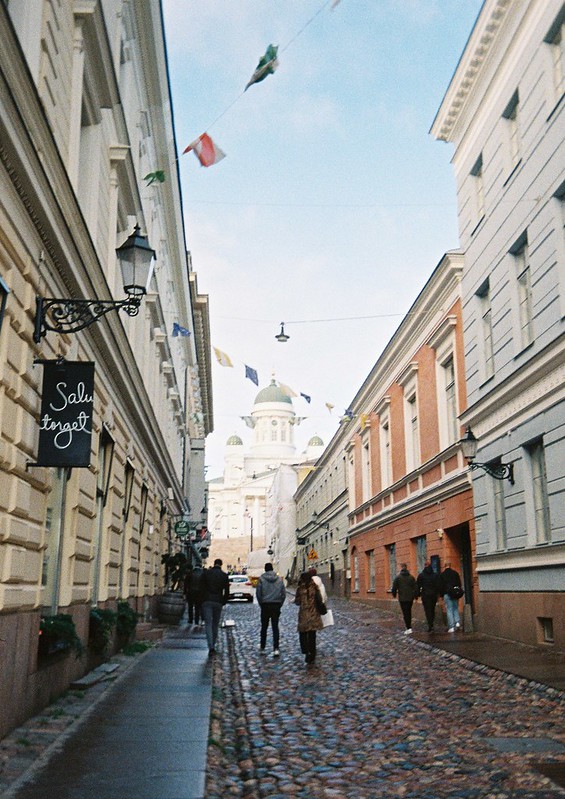




Great review! How many shots did you take to use those different films on one trip? Mine has recently arrived but I haven’t used it yet. What are your thoughts on the viewfinder in comparison to the previous model? Is it still only showing the middle of the frame? I’m planning to test out the bulb mode a bit. I see the PetaPixel review says you can use it to make double exposures and slow flash sync keeping the shutter open after the flash.
3 rolls 1 36 exp (the XP2) and 2 rolls of 24 exp kodak (200 & 400). I was pushing as it mean shooting about 200 frames in a day and a half as I was at a conference and only had a day and a bit off before. That said Easy to do in a new town.
BTW, that’s a “Waterhouse Stop”, not Waterstone. Take it from a guy that’s old enough to actually have used view camera lenses that had those! I guess auto correct strikes again?
Well spotted. Ironically I know better as I used to work with a John Waterhouse whom I believe was a distant relative of his more photographically famous ancestor. Autocorrect strikes again methinks. Will tweak
An UWS with a glass lens would be interesting. Add a Waterhouse stop, a flash, a tripod mount, something to screw in filters to… by Jiminy, you’ve got a decent camera!
Oh totally Tom. Even this Hybrid lens in a full frame body would be interesting. the N35N has a fairly flimsy mask to make it half frame which would be an easy matter for RETO to omit. Just some minor re gearing and change the finder mask and that’s all you’d need. Agfaphoto and Escura did that in reverse with their Dubblefilm class half frames.
Hi, great review!
Did adding the lens hood introduce any vignetting to your photos? I’m planning to get one for my camera. The 30.5mm one.